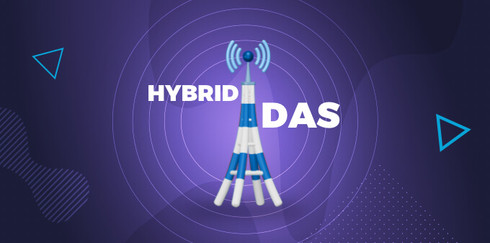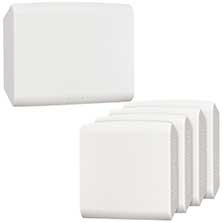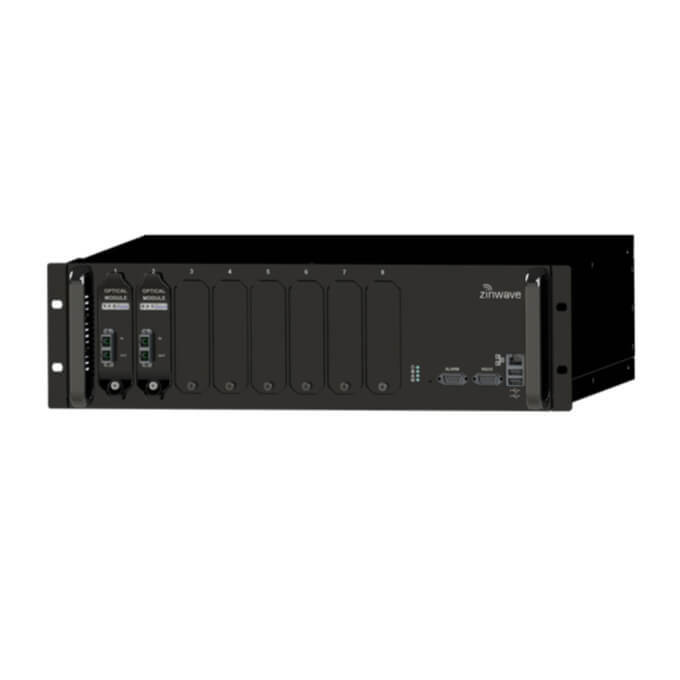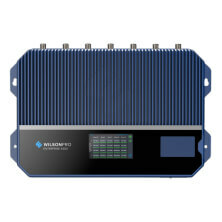What is Hybrid DAS and How Does it Work?
Hybrid DAS May Be the Solution You've Been Searching For
Cellular has become a vital component for business operations. Unfortunately, not all buildings are blessed with reliable cell reception.
When looking for an in-building cellular boosting solution, you’ll typically come across Passive DAS and Active DAS. In many cases, the former does not offer the desired scalability while the latter is on the more expensive side. Fortunately, there is a perfect middle ground! It’s Hybrid DAS.
Take advantage of our system design and installation services. Learn more or call us for a free consultation: 1-800-646-0938.
What is Hybrid DAS?
A Distributed Antenna System, or DAS for short, is a network of antennas deployed throughout a building to increase cellular coverage.
Hybrid DAS is made up of passive (pieces that do not generate energy) and active (pieces that need energy to work) components. This enables Hybrid DAS to deliver the coverage scalability of Active DAS with the affordability of Passive DAS.
To learn the difference between Active and Passive DAS, watch this short video:How Does Hybrid DAS Work?
A DAS system does not generate cellular signal. It receives cellular signals from a signal source. A Hybrid DAS signal source can be:
- Off-Air from surrounding cellular towers. Signal is captured from multiple carriers if desired using donor antennas usually installed on the roof. This is the most common signal source for Hybrid DAS.
- A Base Transceiver Station (BTS) from each carrier whose signal you want to improve in your building. Obtaining a BTS requires carrier approvals which is a lengthy process.
When using Off-Air, performance will heavily depend on outside cellular signal strength. To distribute a strong signal, the donor antenna is connected to an amplifier via coaxial cables to boost received signals.
With a BTS, signal comes directly from the cellular provider. Not only does it deliver a stronger signal than Off-Air, but it also adds capacity. It’s almost like having a cell tower inside your building.
A Master Unit manages signal received from the source (i.e. Off-Air or BTS). It converts radio frequency (RF) signals to digital signals for transmission across Ethernet or fiber cable. These types of cables have significantly less loss than coaxial cable, which is the main cabling used with Passive DAS, allowing longer runs for greater coverage across a single building or a campus.
Remote Units (RUs) deployed throughout the building convert digital signals back to RF. Antennas connected to the RUs using coaxial cables broadcast the signal in their designated areas. End users will instantly see a dramatic increase in connectivity.
Scalable, Hybrid DAS is perfect for buildings ranging from 9,290 to 46,452 sq m. Though, it can be designed to fit any building across any industry.
What are the Advantages and Disadvantages of Hybrid DAS?
Here is a short list of the advantages and disadvantages of Off-Air Hybrid DAS and BTS Hybrid DAS:
Off-Air Hybrid DAS
| Advantages | Disadvantages |
|
|
BTS Hybrid DAS
| Advantages | Disadvantages |
|
|
What Hybrid DAS Options Are Available?
We offer two of the best Hybrid DAS solutions available on the market. They include:
Nextivity QUATRA Commercial Signal Booster
The Nextivity QUATRA is a very powerful signal booster that significantly enhances cellular reception for any cellular device for any specific carrier (Bell, Rogers, Telus, etc.). Featuring 100 dB gain, it is over 1000x more powerful than other commercial signal boosters.
It uses Network Units (NUs) and Coverage Units (CUs).
- NUs process and improve signal quality. One NU supports four CUs.
- CUs broadcast boosted signal.
Signals are transmitted via Ethernet cable between the NUs and CUs. When compared to standard cell boosters, this allows better signal quality and longer cable runs. The QUATRA can be built to cover up to 18,581 sq m with dependable cell connectivity.
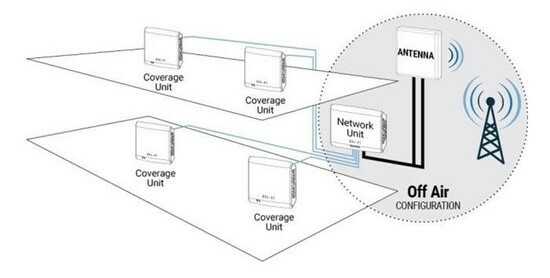
WilsonPro Zinwave Hybrid DAS
Zinwave has been leading the way in DAS for over 10 years. Their feature is a fiber-based 5-component system.
- Primary Hub: Converts signal to optical and directs it.
- Service Module: Interfaces with signal source.
- Optical Module: Enable fiber connection from primary hub to secondary hub or remote unit.
- Secondary Hub: Extends coverage and reach.
- Remote Units: Converts optical signals back to RF.
Wideband, it covers frequencies between 150 MHz to 2.7 GHz with the Unitivity configuration or 5GHz with the Uniwave configuration. One single layer of hardware supports cellular, public safety, two-way radio, and other wireless services.
All components are connected via fiber cable. This type of cabling allows even longer runs than Ethernet, enabling greater scalability.
It is paired with a WilsonPro Enterprise 4300 to boost Off-Air cellular signals from multiple carriers. This is WilsonPro’s most powerful booster. It supports all carriers and offers up to 70 dB gain of amplification. Under perfect conditions, it can provide up to 9,290 sq m. Additional units can be easily integrated for more coverage.
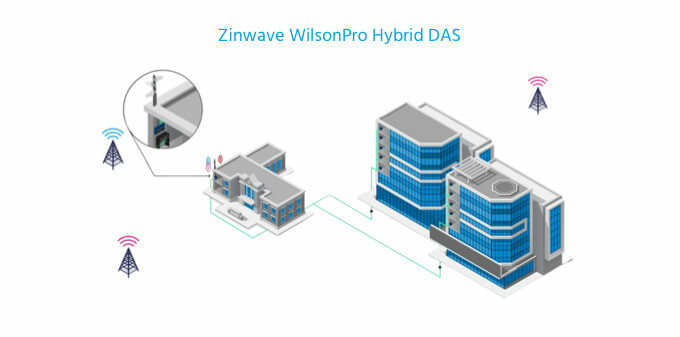
FAQs
What’s the Difference Between Active and Hybrid DAS?
Active and Hybrid DAS are very similar. The difference is that Hybrid DAS uses some passive elements to distribute cellular signal throughout a building. Thus, it's able to provide great coverage at a lower cost.
What’s the Difference Between Passive and Hybrid DAS?
Passive DAS uses coaxial cables for signal distribution. This causes some signal attenuation and prevents long cable runs. Hybrid DAS uses a combination of coaxial cables and digital cables for signal distribution. The digital cables have significantly lower signal loss than coaxial and allow for significantly longer runs. As a result, Hybrid DAS can deliver stronger signals at a larger scale. Though, it is pricier.
When Should I Consider Hybrid DAS?
Hybrid DAS is ideal for buildings ranging from 9,290 to 46,452 sq m but can be customized for any venue. You should strongly consider it when looking for a scalable in-building cellular boosting solution that's also affordable. We recommend you consult an expert to ensure this is the best solution for your needs. Give us a call at 1-800-646-0938.
Does Hybrid DAS Need a Broadband Internet Connection to Work?
Hybrid DAS does require an internet connection for activation. A continuous internet connection is not needed for operation.
Will Hybrid DAS Work Outdoors?
No. Hybrid DAS is meant for indoor use.
Why Choose Us?
SingalBoostersCanada has the Hybrid DAS solution for your business. We can help you supercharge your business with dependable cellular coverage where it’s needed for smooth operation. Dropped calls, slow data, and failed text will be a thing of the past. Give us a call at 1-800-646-0938 or email us at sales@signalboosterscanada.ca for a free consultation. Our DAS experts are happy to help!


